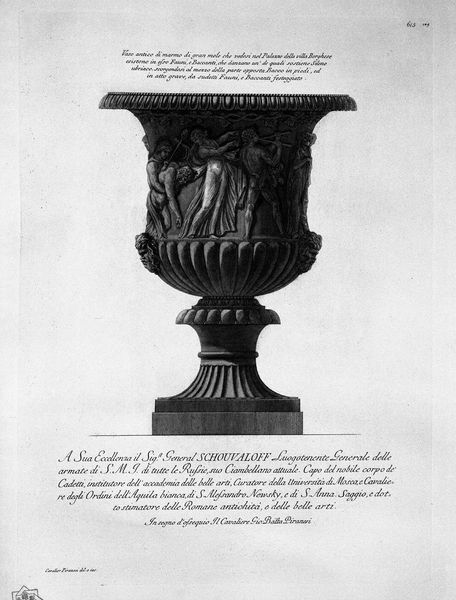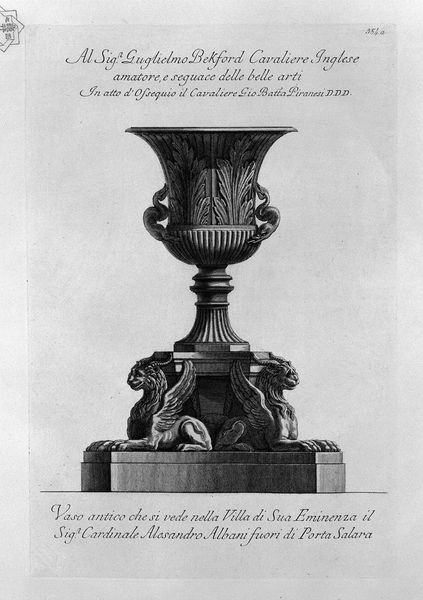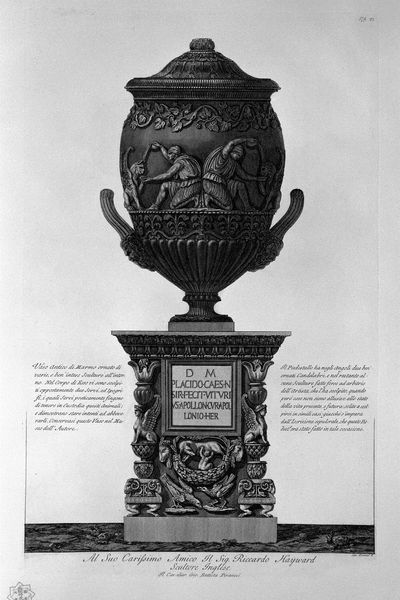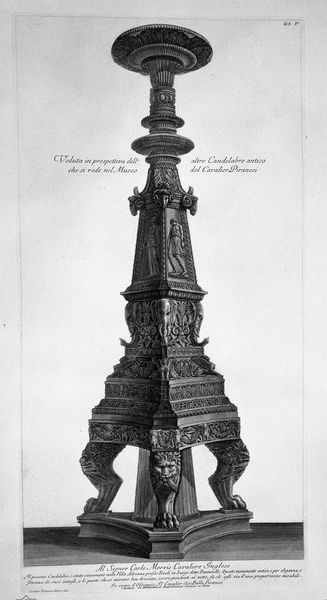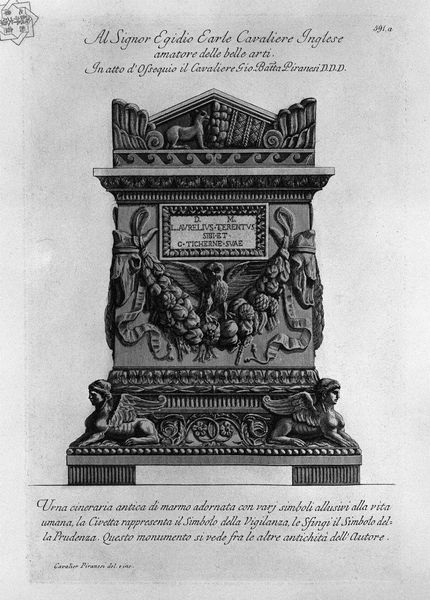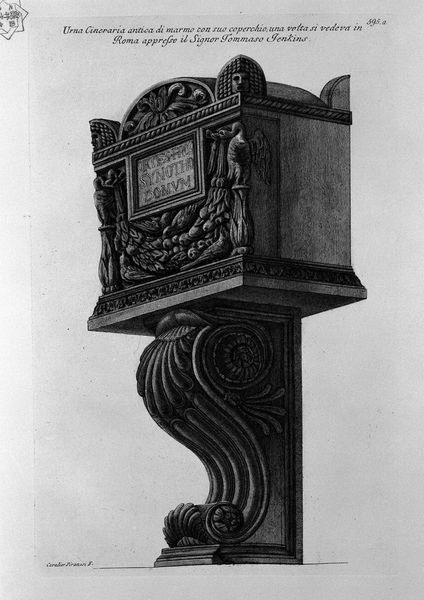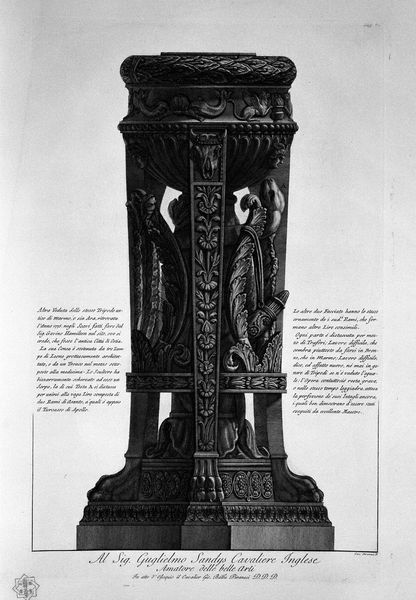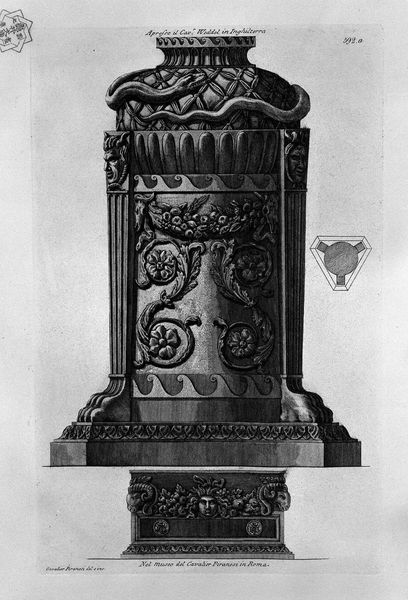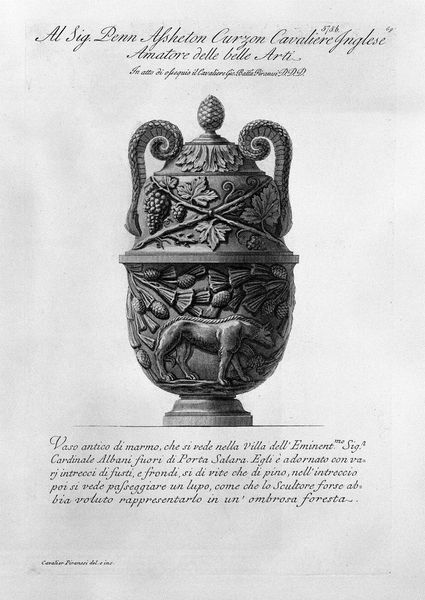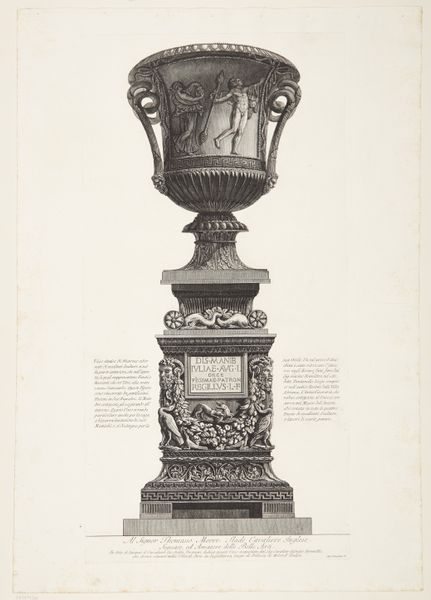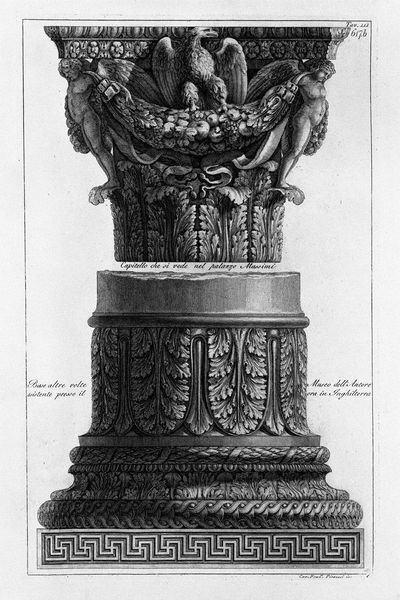
drawing, print, graphite, engraving
#
pencil drawn
#
drawing
#
neoclacissism
# print
#
pencil sketch
#
landscape
#
charcoal drawing
#
charcoal art
#
pencil drawing
#
graphite
#
graphite
#
engraving
Copyright: Public domain
Curator: Looking at this engraving by Giovanni Battista Piranesi, titled "Ancient marble urn in the garden of the Quirinal," what are your immediate thoughts? Editor: Somber, definitely funereal, but also incredibly grand. The scale seems monumental even in this print, and the intricate details—all those figures and flourishes—give it a palpable sense of history and loss. Curator: Precisely. Piranesi was fascinated with the grandeur of Roman antiquity, and that certainly comes through here. Consider how prints like this, widely circulated, helped shape and solidify perceptions of Roman classicism and its revival in the Neoclassical movement. The power of imagery, made accessible. Editor: Absolutely. The urn itself, with that eagle perched on top, feels laden with symbolic weight. Eagles represent power, victory, the Roman Empire itself. Below, the carving of wolves attacking a boar—it speaks to conflict, struggle, perhaps the transient nature of life itself. The animals feel vital to its impact, and yet the central location of a framed insciption is intriguing in contrast to their wildness. Curator: And those wolves relate to the she-wolf who nursed Romulus and Remus, legendary founders of Rome, the story linking back into ideas about power, civilization, and ultimately Roman dominance. What Piranesi is presenting us with here isn't just a decorative object, but an idea of Rome and of how classical power connects to both contemporary events, places, and powerful contemporary collectors like Abott Grant to whom it is dedicated, an amateur of beautiful arts as indicated by the inscription. Editor: So it is about memory, commemoration, power, ambition, and the cycles of civilization. Piranesi offers us not just an object but an incredibly concentrated symbolic statement about the legacy and weight of history. Curator: The engraving process itself—all those meticulously etched lines to suggest depth and texture. In the end, he wasn’t merely documenting an object; he was crafting a powerful, enduring symbol within the aesthetic of the time. Editor: Agreed, and thinking about how images are also embedded within patronage and gifting economies opens up new avenues to consider its social value. Curator: Yes, how potent it all becomes.
Comments
No comments
Be the first to comment and join the conversation on the ultimate creative platform.
